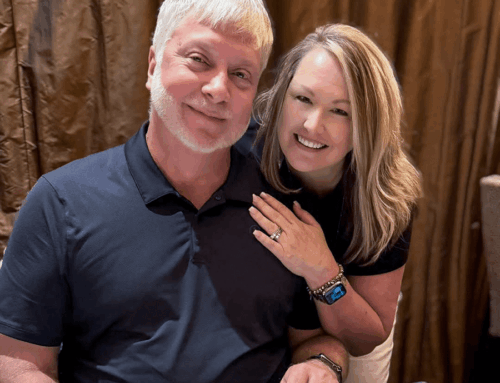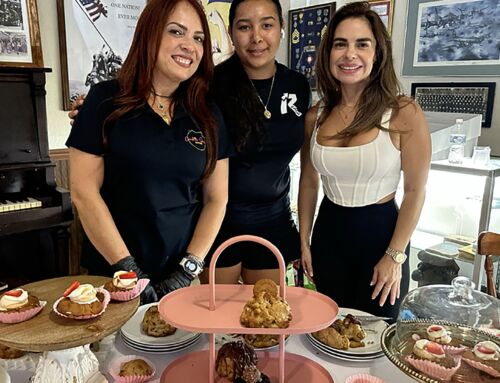By Mary Ann DeSantis
Rockin’ and rollin’ down the Blues Highway
The blues had a baby and they named it rock ’n’ roll.” —Muddy Waters, American blues musician, 1913-1983


Gateway Museum
The flat, fertile land of the Mississippi Delta seems to roll on as far as the eye can see. The views are austere in places, but you can feel the magic that happened here when blues musicians gathered and gave birth to American music in the early 20th century.
Life wasn’t easy for the likes of Robert Johnson, Muddy Waters, B.B. King, and many other iconic blues artists. Music was something they played to escape their harsh lives, overwhelming poverty, and racism.
The lucky ones—or the ones with the tenacity to survive—went north to Memphis and Chicago via Highway 61, known as the Blues Highway.
I grew up listening to rock ’n’ roll in south Mississippi, a world away from the Delta cotton fields. Little did I know at the time that my Elvis Presley, Beatles, ZZ Top, Rolling Stones, and Eric Clapton albums had their roots in the blues. Irish singer-songwriter Van Morrison said it best, “Muddy Waters is a prime influence for anybody who’s ever done anything rock ’n’ roll.”
Recognition for these musical pioneers’ contributions was a long time coming. More than 10 years ago, Blues Trail markers began popping up throughout the state. Today, world-class museums honoring Mississippi’s musical legends dot the landscape and are attracting visitors from around the world. If it’s the blues you want, a journey along Highway 61 is the place to start for history, music, food, and fun.

Gateway to the Blues
From Memphis, visitors pick up Highway 61 in Tunica, known for its casinos on the Mississippi River. The Gateway to the Blues
Visitor Center and Museum is a must-see landmark as well as the place to get a blues primer. Housed in an 1895 train depot, the museum opened in 2015 and has interactive exhibits and interesting artifacts, including a 1952 Les Paul guitar—the first made to be amplified. The museum offers a great overview along with the lowdown on events and restaurants along Highway 61.
Ground Zero

Ground Zero

Ground Zero
Clarksdale, once a transportation hub, is where Highways 61 and 49 connect. Those highways, in fact, are more famously known as “The Crossroads,” where Robert Johnson supposedly sold his soul to the devil for the ability to play the guitar like no other.
The Crossroads marker is a hard photo to take, because it is a busy intersection after all; however, it’s worth a stop because the best parking is at Abe’s BBQ, where not only will you find awesome barbecue but also hot tamales, a Delta delicacy that ranks just below fried catfish.
The Delta Blues Museum in Clarksdale showcases just how blues music inspired rock ’n’ roll. With so much to see, I almost missed the “piece de resistance”: the “Muddy Wood” guitar created by Billy Gibbons of ZZ Top fame. Gibbons picked up some loose boards from Muddy Waters’ shack at the Stovall Plantation and had the guitar made, which he played in concerts before donating it to the museum.

Delta Blues Museum
Clarksdale has been ground zero for blues culture since the 1920s. In fact, you’ve probably heard of actor Morgan Freeman’s blues joint, called Ground Zero. Clarksville is definitely worth an overnight stay just to experience live blues performances every night of the week by up-and-coming performers and established stars at not only Ground Zero but also other nearby venues.
B.B. King and the Delta Interpretive Center
The thrill was not gone by the time I arrived at the B.B. King Museum and Delta Interpretive Center. I saw the legendary King perform before his death, so I had looked forward to visiting this beautiful facility in his hometown of Indianola.

BB King Museum Interactive Center
Riley B. King was a sharecropper and truck driver before his transformation into the “Beale Street Boy.” The museum chronicles King’s development from a musician touring the Chitlin’ Circuit in the South to his international acclaim. And if you’ve ever wondered how his guitar “Lucille” got its name, this is the place to hear the true story. Finally, you can pay your respects to the icon himself, who was buried in the courtyard in 2015 following a procession down Highway 61.
Where Dreams Began
The first Grammy Museum outside Los Angeles is located in this hip college community that is also home to Delta State University. Open since 2016, Grammy Museum Mississippi deserves a full day to see everything and experience the many interactive displays.
The “On the Red Carpet” gallery is filled with legendary performers’ original costumes, including Beyoncé’s 2014 sheer white lace gown. The Roland Room lets visitors channel their inner rock star with an elaborate set-up with instruments and flashing strobe lights.
While the Grammy Museum is the most fun with so many hands-on exhibits, its mission is all about education, especially the history and cultural significance of American music. Another intent is to inspire the next generation to explore and create new forms of music.
“We want them to dream,” explains NaCherrie Cooper, marketing director for the museum. As the great-granddaughter of Muddy Waters, she knows about the power of a dream.
“The best gift my great-grandfather gave me was a dream,” says NaCherrie, who remembers Muddy driving her to elementary school. “I share that—the power of having a dream—with the students who visit.”
With so many world-class museums along Highway 61, skipping nearby Dockery Farms—considered the birthplace of the blues—would be easy but a mistake. B.B. King once said, “It all started here.” Singer Rosanne Cash, daughter of country legend Johnny Cash, described Dockery Farms in her 2015 concert there as “hallowed ground,” and indeed it felt like that on a rainy Delta morning when I walked through the cotton gin where blues pioneers Charley Patton, Robert Johnson, Son House, and others worked during the early 20th century. During their breaks, they created the music and culture that became known as the blues. And it’s where their dreams for a better life began.
msbluestrail.org/museums

Dockery Farms

Grammy Museum








